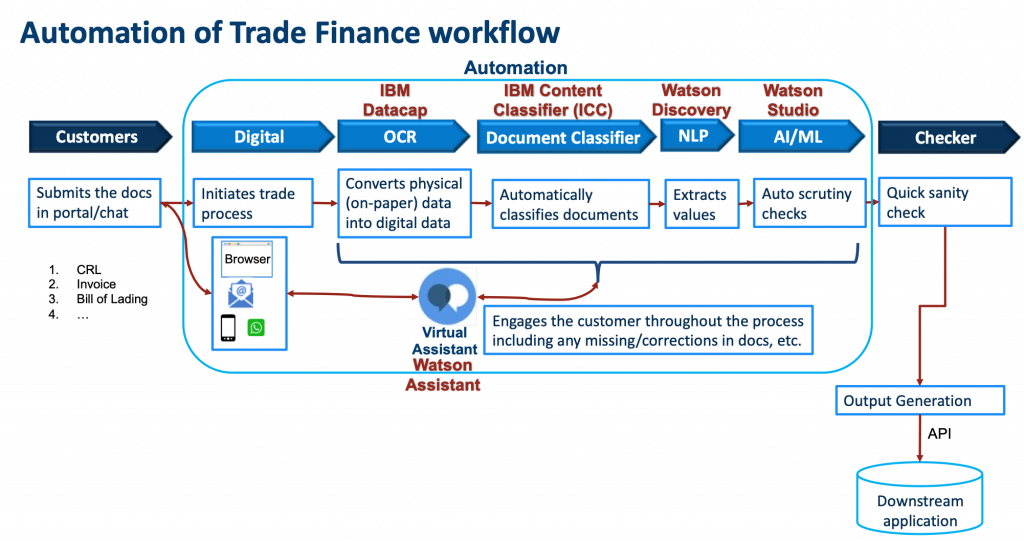Cognitive
The Leaderboard – Hybrid Multi Cloud Summit
August 23, 2019 | Written by: IBM India Pvt Ltd
Categorized: Artificial Intelligence | Cognitive
Share this post:
Managing IT complexity and harnessing the speed of technology innovation is not anymore an aspiration, but a mandate for any enterprise. To meet customer needs, they need to stay competitive businesses need to move to cloud. And they’re making progress.
Yesterday’s IT is too slow for modern business requirements. Vast data volumes and high demand for digital services necessitate going beyond data center hosting.
Enterprises are increasingly transitioning to hybrid multicloud IT operating models that fuel emerging technologies like IoT, blockchain and containers. Only hybrid architectures offer enterprises the scale and agility to tap emerging digital markets and design inventive customer experiences. Yet digital transformation isn’t without challenges.
Participate in the discussion on Aug 30th. Watch this space for updates.
A recent IBM Institute for Business Value report found that 85% of enterprises are using a multicloud environment, but only 41% have a multicloud strategy.
Also, business units often deploy their own cloud solutions because they can’t afford to wait. This type of shadow IT can create security or operations problems that impact customer experience. For example, a system failure during peak times has serious ramifications to a retailer.
To align IT and business innovation, IT teams must change the way they deliver, govern services and transition to unified cloud management. The foundation for this is a hybrid multicloud operating model.
Self-service multicloud
The next generation of IT combines a variety of public and private clouds with traditional IT. To optimize this new way of operating, self-service and DevOps capabilities are added. This gives technology leaders the flexibility to select the best combination of new and legacy elements that fit business initiatives.
The new enterprise IT operating model is built on these principles:
- Self-service IT across lifecycles:This enables users to easily discover, configure, provision and deploy a digital service or stack in development or production environments.
- Multiprovider ecosystem: Instead of single providers, IT relies on multiple cloud providers suited to the business and workload needs.
- Integrated DevOps and Information Technology Infrastructure Library (ITIL): IT integrates both processes with a shared change and configuration management system that is consumed as a service.
- Artificial intelligence: Data-driven AI helps IT automate and govern operations within a complex environment.
- Outcome-driven IT: A focus on providing holistic solutions is essential. IT spend and performance are tied to business capabilities and outcomes.
Many enterprises don’t have the expertise or resources to manage this change on their own. It is imperative for CIOs to understand how they migrate and modernize will have a big impact on how they manage their cloud environment. It’s important to look for cloud platforms that not only give you a place to host your cloud apps, but also have tools and management support capabilities to quickly develop and test software and efficiently manage infrastructure in the long term.
Driving a cloud strategy is part of building a smarter business.
For more information about the foundation for this new IT operating model, including systems integration, process changes and workforce skills view this eguide.
Join the discussion for our upcoming event ‘The Leaderboard – Hybrid Multi Cloud Summit‘ on 30th Aug in Mumbai
Insurance Company Brings Predictability into Sales Processes with AI
Generally speaking, sales drives everything else in the business – so, it's a no-brainer that the ability to accurately predict sales is very important for any business. It helps companies better predict and plan for demand throughout the year and enables executives to make wiser business decisions.
Trade Finance Workflow Automation using AI
Trade Finance Workflow Automation using AI
Agile Demand Planning and Intelligent Forecasting using IBM Planning Analytics
Gauging the impact of business disruption seems to be an uphill task during uncertain times. During uncertain times, the requirement is for a solution that provides the ability to quickly assess the impact of business disruption and explore different courses of action. To get a complete picture, the need is to collect data from multiple […]



